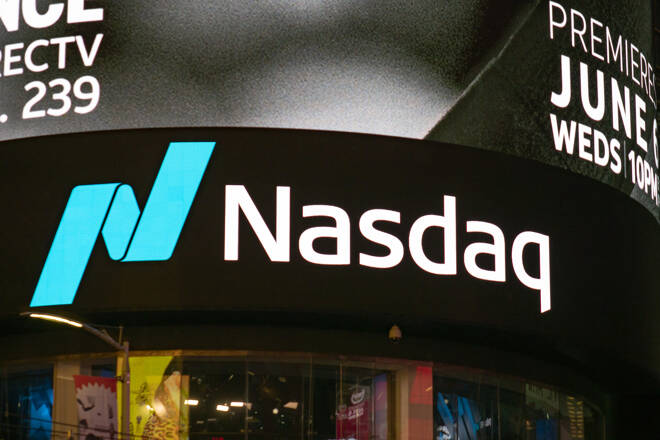Advertisement
Advertisement
Nasdaq 100, Dow Jones, S&P 500 News: Tech Sector Facing Headwinds
By:
Key Points:
- Tech stocks dip as rising Treasury yields impact Nasdaq performance.
- S&P 500 shows mixed results amid inflation data, rate cut speculation.
- Investors eye Fed's next move as CPI data exceeds expectations.
Wall Street’s Mixed Signals Amid Inflation and Rate Cut Speculation
Wall Street opened with uncertainty on Wednesday, as rising U.S. Treasury yields led to a downturn in the tech-heavy Nasdaq. Major tech players like Nvidia, Meta Platforms, and Apple saw their stocks dip between 0.9% and 2.9%. The broader technology sector, including chip stocks like AMD and Broadcom, also experienced declines, with the Philadelphia SE Semiconductor Index falling by 1.7%.
At 15:10 GMT, the Dow is trading 39136.86, up 131.37 or +0.34%. The S&P 500 Index is at 5171.49, down 3.78 or -0.07% and the Nasdaq-100 Index is trading 16195.57, down 70.06 or -0.43%.
S&P 500’s Varied Performance
Contrasting the tech sector’s struggles, the S&P 500 technology sector dropped by 1.2%, while the energy sector gained 1.8%, buoyed by rising crude prices. This mixed performance comes after the S&P 500 hit a record high on Tuesday, driven by strong performance from Oracle and tempered reactions to consumer price data.
Inflation and Federal Reserve’s Stance
Investors are currently processing the latest consumer price index data, which indicated a higher-than-expected rise in prices. February’s CPI showed a 0.4% monthly increase and a 3.2% annual rise, slightly above forecasts. Core CPI, excluding food and energy, also rose more than anticipated. Despite inflation rates exceeding the Federal Reserve’s 2% target, there is a growing expectation of interest rate cuts, with the FedWatch Tool indicating a 65% chance of a cut in June.
Market Outlook and Upcoming Data
The market is now looking towards the Federal Reserve’s next meeting, with a focus on their assessment of inflation trends. Additional economic data, including the February producer price index, is expected to provide further insight into inflationary trends.
Short-Term Market Forecast
Given the current economic indicators and the Federal Reserve’s cautious stance on rate cuts, the market outlook remains cautiously optimistic. Investors should expect continued volatility in tech stocks, with potential uplifts in sectors like energy. The overall market trend in the short term is likely to be influenced by upcoming economic data and the Federal Reserve’s policy decisions.
Technical Analysis
E-mini Nasdaq-100 Index futures are trading lower on Wednesday, setting up the possibility of a lower-high formation that could be an early sign of weakness.
Let’s face it, the tech-heavy index has been nearly flat during March, which is another sign that investors may be unloading shares. I believe the February 29 close at 18333.00 will become more important as the month progresses since it will decide whether the market closes higher or lower for the month.
More importantly, after reaching an all-time high, a lower close for the month or closing price reversal top, could signal a major top.
About the Author
James Hyerczykauthor
James Hyerczyk is a U.S. based seasoned technical analyst and educator with over 40 years of experience in market analysis and trading, specializing in chart patterns and price movement. He is the author of two books on technical analysis and has a background in both futures and stock markets.
Advertisement
